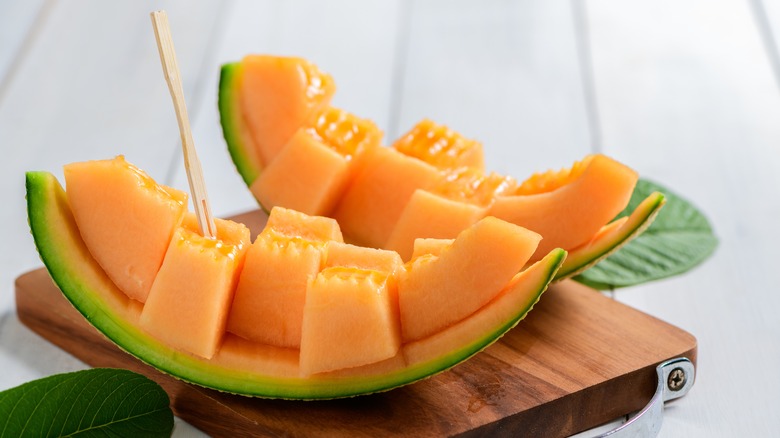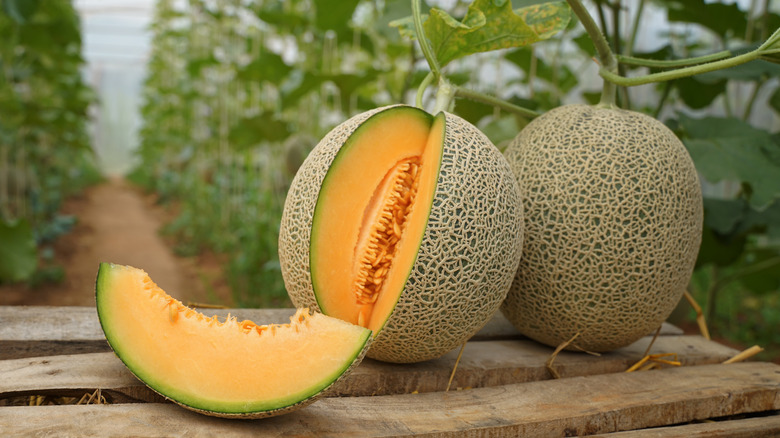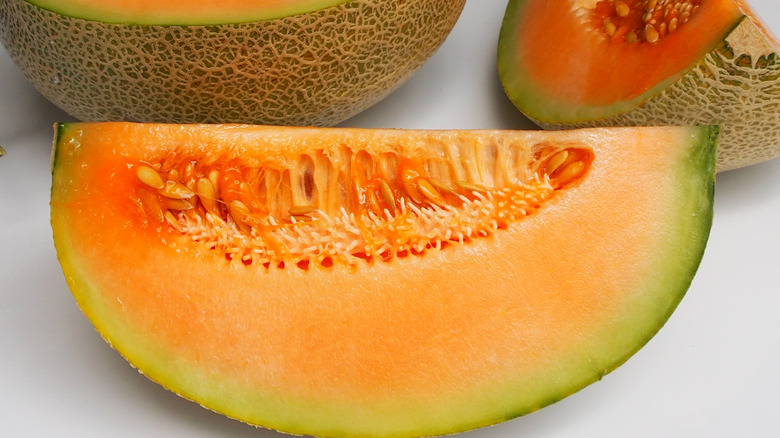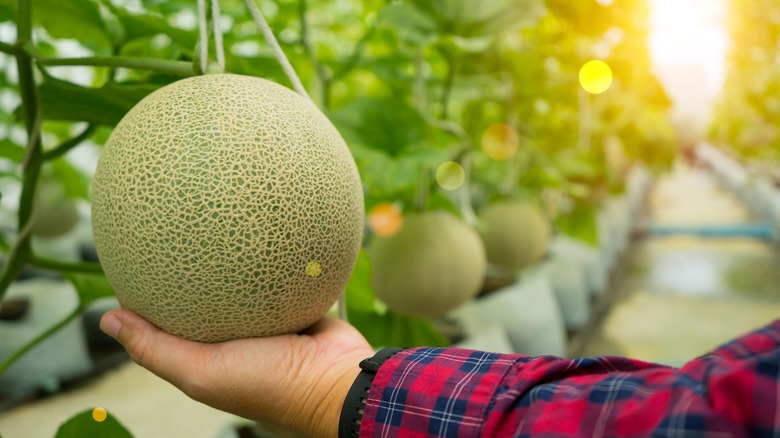The Easy Tricks To Help You Pick A Great Cantaloupe
Summer brings us strawberries, peaches, and cherries, but true connoisseurs know that no fruit can beat the allure of a perfectly ripe melon, like cantaloupe. At its best, a slice of cantaloupe should be soft, juicy, fragrant, sweet, and flavorful. But too often, what seems like a perfectly ordinary cantaloupe at the store brings dismay when sliced: an underripe cantaloupe, each bite crunchy, bland, mealy, and even bitter. It's all the more disappointing considering how amazing cantaloupe is when ripe.
It turns out that, though the visual appearance of a cantaloupe can offer important indications of its ripeness, that's just one piece of the puzzle. The melon's fragrance, and how it feels can give clues as to whether it's ready to slice into, or if you should leave it at the store for another unwitting shopper to pick up. Using these sensory tricks for picking the best cantaloupe will help save you from the gustatory disappointment that only a bad melon can bring.
Pick a cantaloupe by sight
Whether in your garden or at the grocery store, there are a few visual cues that can tell you if your cantaloupe is ripe or not. This is especially important because unlike other produce (for instance, bananas), cantaloupe doesn't ripen much after it's been picked.
Cantaloupe looks like it has a sort of natural netting around it. What you should look for is the color of the rind beneath that netting. It should be a creamy beige color when ripe. If it's green, that means it's not ready yet. If you're in the garden, you can leave the melon on the vine to continue its ripening journey, but if you're at the store, it might be a lost cause for that poor melon — put it down and keep looking for one that has the right color.
Another visual clue to a cantaloupe's ripeness is the appearance of the stem end. According to Minneopa Orchards, there should be a little indent there, where the melon fell away from the stem. If there's still a piece of stem attached, or if the area is flat, that might mean that the cantaloupe was harvested before it was ready.
How a ripe cantaloupe should smell
The good news is that cantaloupe has a distinct scent when it's ripe. That means that along with your eyes, you can use your nose to try to determine if your melon is ready to eat. Take a whiff of the blossom end — the domed side of the fruit opposite the end where the stem connected to the larger plant – of the cantaloupe, which will be the most fragrant, and see what your nose picks up on.
Ripe cantaloupe should have a sweet, melon-y, floral, and even musky scent. In fact, cantaloupe belongs to the muskmelon family, so that musk aroma makes sense. You can press down on the blossom end of the melon gently to help release its aroma. If it doesn't smell like anything, it's most likely underripe. On the other end of the spectrum, if it smells acidic, like acetone, or fermented, the melon is overripe and should be avoided.
What does a ripe cantaloupe feel like?
Last but not least, touch is one of the best ways to pick a ripe cantaloupe. A ripe cantaloupe should feel heavy for its size — this is a good indication that the flesh inside is juicy and full. If it feels light for its size, it's likely not ripe yet. You can also use the classic knock test to help determine the melon's ripeness — if it sounds hollow, it isn't ripe, but if it returns a deep thud, it probably is.
Touch can also help you tell if a cantaloupe is ripe by measuring the firmness of the melon. If it feels rock hard, it's probably unripe. If it has lots of soft spots or visible bruises, it might be overripe. What you want is a cantaloupe that's firm to the touch but that has a little give, with a few soft spots here and there but nothing soggy or squishy.
The best way to pick a ripe cantaloupe is by combining your senses of sight, smell, and touch to see if the melon is fragrant, heavy, off-white, and firm but not hard. If it checks off those boxes, that means it's ready to be devoured.



